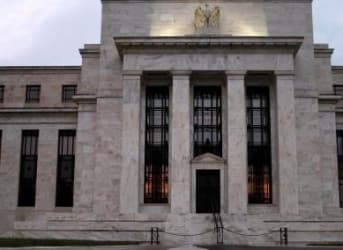Earlier this year, most of the financial stories were about how the Fed will start to raise interest rates in June. Much of this speculation was due to the lower unemployment rate, and the expectation that the U.S. economy would be in full recovery. This past Wednesday, the Fed decided not to raise interest rates, despite the fact that most media pundits were certain that it would finally have normalized its monetary policy by now.
Despite the recent inaction by the Fed, many still believe a rate hike will occur in September. The problem with this assumption is that most media analysts are basing it on a headline number such as unemployment, and not the underlying details of the labor market.
Currently, the unemployment rate stands at 5.5%. Although this looks great on the surface, one of the reasons the unemployment rate is so low, is because only 62% of the population is participating in the work force.

When looking at this chart, one can see a clear correlation between the decline in the unemployment rate, and the decline in the labor participation rate. The mainstream press attributes this to the retirement of baby boomers, but the statistics don’t support their thesis.
 Related: Why A U.S Shale Slowdown Will Hardly Affect Oil Prices
Related: Why A U.S Shale Slowdown Will Hardly Affect Oil Prices
This chart clearly shows that the declining labor participation rate has come from the age groups between 16-54 years old, people that are considered to be in their prime working years. The age group of 55-75, has actually increased its labor participation rate. This is the opposite of what normally would occur.
It’s not just the labor participation rate that is concerning, but the quality of jobs that are being created. Most of these jobs being created pay low wages and consist of part time work. Higher paying industries such as accounting and legal work are employing 1 million fewer workers since 2007, while low wage jobs such as those in fast food restaurants and strip malls have increased by 1.8 million jobs since 2007.
If you look at the other economic indicators, one can see that the unemployment rate is more of an outlier, then an indicator. Currently, two thirds of Americans are living pay check to pay check, 1st quarter GDP was reported at a negative growth rate, the Chicago PMI is reporting numbers that are reaching a 13 month low, the ISM numbers are contracting, and recently the Chicago economic activity index was reported to be negative for the second straight month. What media pundits fail to understand is that if the Fed raises rates, the U.S. will go back in recession. An increase in interest rates will contract the money supply, and as the money supply contracts, so does the economy. Related: Russia’s Rosneft To Help Venezuela’s Oil Sector
It’s not just the economic data that would decline if the Fed were to raise interest rates; the stock market would decline rapidly. This is because the recent bull market in stocks has been fueled by artificially low interest rates, not the economic “recovery.” Artificially low interest rates have allowed corporations to borrow money so they can repurchase their own stock. Since 2009, companies in the S&P 500 have spent over $2 trillion dollars on share repurchase programs. These share buybacks have been made possible by easy money. This is why corporate debt is at record highs.
If interest rates were to rise, corporate debt would become much larger and much more burdensome, and these share repurchase programs could then turn into share issuing programs, as a means to raise cash. As a result, corporate earnings would decline due to the higher share count that would occur, and much lower earnings per share numbers (EPS) would start to be reported. This would ultimately result in a large stock market sell off. Related: Growing India Becomes Major LNG Player
This is what the mainstream press has been ignoring, and why the Fed is reluctant to raise interest rates. The Fed might attempt to raise rates once, as a symbolic gesture of an economic recovery, but if it does, the economy will go back into recession, the stock market will start to decline perceptibly, and the Fed will step back in with another round of QE, as a means to support its ongoing wealth effect theory.
I don’t expect this to happen overnight, this may take another 12-18 months to play out, but play out it will. When this does happen, oil will be one of the higher performing sectors in the market. But the strongest performing sector will be precious metals, as they are historically the strongest hedge against a weaker dollar.
By John Manfreda of Oilprice.com
More Top Reads From Oilprice.com:
- Expect A Wave Of Consolidation In The Oil Industry
- Indonesia Banking On A Big Return To Oil And Gas
- Shale Resources Key To Deciding Argentina’s Future

















